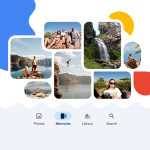Your customers discover your business in a variety of ways—through word of mouth, advertisements, and, increasingly, digital marketing efforts.
Creating effective strategies to turn these initial interactions into customers is complicated. How can you nurture and guide a prospect from initial awareness of your brand through to purchasing your product and becoming a loyal customer? You can start by mapping out the interactions a customer has with your business to create an effective marketing funnel strategy.
In this article, we’ll explain the different stages of the marketing funnel, how to create one, and dive into the tactics you can use at each stage.
What is a marketing funnel?
A marketing funnel is a model representing the customer journey from a prospect discovering your business, brand, product, or service to the moment they take a specific action or purchase from you.
You can divide a marketing funnel into as many stages as you’d like, but most marketers follow three distinct stages:
Top of the funnel (TOFU): Awareness
In this stage of the funnel, you market to a wide audience to capture as many leads as possible. Typical TOFU activities include publishing blogs and how-to articles and posting on social media platforms.
Middle of the funnel (MOFU): Consideration
You market to an engaged audience who knows your brand. Typical MOFU activities include promoting and encouraging prospects to attend a webinar and to download case studies, ebooks, whitepapers, and research reports.
Bottom of the funnel (BOFU): Conversion
At the bottom of the marketing funnel, your leads become fewer but more likely to convert. Treat these leads as though they are about to make a purchase decision. Typical BOFU activities include live demos, product trials, vendor comparison charts, and customer references.
The widest part of the funnel captures the biggest group of people who might be interested in what you sell, while the smallest part of the funnel includes the smaller group who are most likely to convert.
Benefits of a marketing funnel
📈 Encourage more meaningful growth.
Funnels give you a clearer way to organize marketing tactics and make it easier to understand which tactics work for each stage of the funnel. For example, you might learn that TikTok videos work wonders to increase awareness about your business, but do little to drive actual conversions. This allows for more strategic growth: you’ll double down on what works and pull back what doesn’t.
❤️ Get to know your customers.
Establishing a funnel helps you better understand your target audience and what they need to feel excited about making a purchase from you. Based on their behavior at this stage in the customer journey, you can learn which products they like and the most impactful types of marketing.
💵 Master your purchase cycle.
How long inventory takes to sell depends on your average order value (covered below). Typically, more expensive inventory takes longer to sell than less expensive products. But how many weeks does it actually take, on average, for the costly and affordable items to sell? Once you know how long it takes for the different priced goods to sell, the marketing funnel will provide insight into how to get those products to sell within the average timeline.
How business stage impacts your marketing funnel
Your marketing funnel will grow and develop over time based on cultural trends, the products you sell, and your business’s stage. It’s an evolving model. A marketing funnel strategy requires maintenance, care, and attention to thrive.
There are two main factors that differentiate the marketing funnel for an established business versus a new one:
Brand awareness
The level of brand awareness your business has determines how easy it is to attract new customers. If you have high brand awareness, you’ll spend less money on the awareness and acquisition leg of the funnel and more on consideration and conversion. Lower brand awareness means you’ll need to drive hype and spread the word earlier on, meaning that your time and resources will go toward getting new eyes on your products.
Revenue
The amount of money you bring in determines how much you can spend on marketing activities. The more revenue you bring in, the more you have to spend on paid acquisition and acquiring new inventory. If you’re starting out and have little to spend on marketing, your tactics will look different.
How to develop a marketing funnel
Know your target audience
Before you can deploy a marketing funnel strategy, you’ll need to first create buyer personas and then develop content specific to them at each stage of the funnel.
Marketing funnels outline a straightforward path to conversion. Most customer journeys aren’t as linear. Unsplash
Buyer personas, also called customer personas, are fictional characters you develop to describe, in granular detail, your customers.
You can research and gather data on your customers using your website and social media data, as well as using third-party data platforms, including Google Analytics. You’ll want to look for data points like age, sex, occupation, and incometo better pinpoint your customers.
Also, you may conduct short interviews or surveys with people who have already purchased your product to learn more about them and their experience.
What you learn will inform the channels and style of marketing you’ll use to reach your target audience. For example, if you find you sell primarily to teenage girls, chances are you’re not going to reach them with LinkedIn ads.
Here are different ways you can uncover your target audience:
Look at cumulative purchase history across all customers.
Use digital analytics tools to gather quantitative information.
Run an online survey.
Conduct interviews.
Do industry research to explore consumer trends and behavior.
Complete a competitive analysis by looking at competitors’ audiences.
From this information, create buyer personas that detail the common characteristics of the main types of customers in your funnel.
Establish average order value and a consideration timeline
Your average order value (AOV) is the average value of your customers’ purchases. For example, if your shop’s revenue is $2,000 and you’ve had 100 orders, your AOV is $20.
AOV determines how much focus you put on each part of your marketing funnel. If you sell fine jewelry and your AOV is $1,000, the consideration phase of your funnel will likely be much longer compared to a shop that has an AOV of $20. Customers tend to think longer about making large purchases than smaller ones.
This relates to the marketing funnel because:
High AOV = Long consideration timeline
You’ll want to spend more energy and money on developing content that nurtures people throughout the consideration phase.
Low AOV = Short consideration timeline
You’ll focus more on acquiring new customers because they tend to move through the funnel faster.
This model helps differentiate where you place your budget and the emphasis you put on the different parts of your funnel.
Stages of the marketing funnel
Stage 1: Top of funnel (TOFU)
The top and broadest part of the funnel represents anyone who hears about your product and business. This might be through your own marketing efforts, a recommendation from a friend, a roundup article on Google, or a social media post. These folks are aware that your business exists but may not have a need for one or more of your products.
The strategy for each stage of your funnel depends on your target audience and AOV. But there are actions that generally make sense for awareness. Yes, you can run paid ads, but developing organic content and working with influencers for this stage in the funnel sets you up for longer-term success.
For example, publishing a blog on your site not only helps you get traffic via search engine optimization (SEO), it further nurtures customers who want to learn more about your products, business, or industry in general.
A presence on social media also helps. It allows prospects to learn more about your products, get a sense of your brand’s personality and voice, and engage with you by asking questions, posting comments, or sharing content with friends. Inviting someone to join your email list is another great way to engage with consumers and teach them more about your products. Many businesses offer a discount code to persuade people to join; others simply promise compelling content. Whatever you decide, providing the option to subscribe gives you a way to stay in touch with someone, even if they haven’t made a purchase yet.
When you need to expand your reach further, try partnering with micro-influencers.
“What I recommend to brands right now,” says Amanda Tallon, account strategist at growth marketing agency Shoelace, “is to work with micro-influencers or use the audience that they already have built out, because it’s getting very expensive to acquire new audiences through paid search and social platforms.”
Find influencers to promote your products with Shopify Collabs
Install the Shopify Collabs app today to partner with creators, promote your products, reach new customers, grow your sales, and track affiliate campaign performance, all from Shopify admin.
Install the Shopify Collabs app
Micro-influencers have between 10,000 and 100,000 followers on social media. “If your brand is in line with that micro-influencer,” Amanda says, “chances are their followers are also going to be in line with your business.”
⚠️Choose your acquisition tactics carefully
Though we’re talking about TOFU right now, the methods you use to drive traffic to your site should target prospects that will eventually convert. For example, you might drive a lot of traffic to your website via a podcast. But the listeners aren’t in your target audience, and while they’re curious about your product, they never actually convert.
Peepers, a brand that sells trendy eyeglasses, ran into a similar issue. The business, like many other ecommerce brands, is trying to diversify how it’s finding customers and driving traffic to its store. The team experimented with some nontraditional routes, and though they had ads and content that drove traffic, they didn’t drive conversions.
“Sometimes you fail to get traffic. Sometimes you succeed with traffic but fail to get conversions. You have to put both of them together in order to grow and grow profitably,” says John Hart, VP of operations and ecommerce of Peepers.
Peepers makes trendy eyeglasses. Peepers
Sometimes you fail to get traffic. Sometimes you succeed with traffic but fail to get conversions. You have to put both of them together in order to grow—and grow profitably.
John Hart, VP of Operations & Ecommerce for Peepers<
Stage 2: Middle of the funnel (MOFU)
The middle of the funnel is all about developing and nurturing the relationships you have with the people you engaged with during the awareness phase. When a prospect reaches the consideration stage, they’ve identified a need for your product. They might need it to solve a problem, spark joy, or give as a gift. When someone reaches this stage, they’re aware of your business, what you do, and the types of products you sell. They might be on an email list or follow you on social media.
Amanda cites email marketing as the best tactic for prospects in the consideration stage of the marketing funnel. If they are already on your email list, then they have already bought into your brand at some level.
“You can develop a strong personal story with email marketing,” says Amanda. “You can do quite a bit of brand building in someone’s personal inbox.”
It’s easy to ignore consideration and focus on the bookends of the funnel—awareness and conversion. Amanda warns that though some customers will convert right after you acquire them, oftentimes they need more attention to make a purchase.
Stage 3: Bottom of the funnel (BOFU)
This is the big moment—you’ve posted some great social media content, sent emails that were on point, maybe even worked with an influencer or two. Now, it’s time to drive home your product benefits, business ethos, and unique value propositions to get prospects to make purchases.
Two tactics are particularly effective at this stage:
💬 Customer conversations
A customer will likely reach out to you only when they’re actively looking to make a purchase. They’ll look to you to remove any obstacles in their path. Speaking directly to a customer builds trust, gives them a sense of who you are and what you’re like to work with, and can remove any remaining concerns.
💸 Paid ads
“You can run paid ads at any stage of your marketing funnel,” says Amanda. “But if you don’t have a lot of money, run ads at the purchase stage to get the most revenue for your ad spend.”
Paid ads can go farther at this stage in the funnel because prospects already know who you are, what you do, and the products you sell. Ads serve as reminders and should include copy that drives home your unique value proposition.
If you don’t have a lot of money, run ads at the purchase stage to get the most revenue for your ad spend.
JAmanda Tallon, Account Strategist at Shoelace
Getting shoppers to move from the consideration to conversion stage of the marketing funnel is key for your business. Arturo Rey via Unsplash
The inverted funnel: inspire loyalty and get customers to return
Enticing customers to return is one of, if not the most, cost-effective way to increase your average order value. “It can get really expensive for a business to acquire a new customer. The best-case scenario is for a customer to return and make a second, third, fourth, etc., purchase and increase their lifetime value,” says Amanda.
The Peepers team thinks about driving repeat sales at every point in their business plan, starting with product development. The team creates products with designs that sets them apart from competitors, uses high-quality materials, and sells items at a very competitive price point.
“The next step, and something that we’ve tried to be even more focused on,” John says, “is delivering the best possible customer experience.”
Along with delivering a top-notch customer experience, there are other effective marketing tactics that can help you with the loyalty section of the funnel.
Try a direct-mail campaign
The Peepers team sends direct mail to drive more traffic to their website. There’s so much to experiment with here. You could send a postcard with a unique coupon code, a fun branded sticker set, or a handwritten note.
Ask for user generated content
After a customer makes a purchase, Amanda recommends sending an email asking for a photo of their purchase and a review. After customers provide the content, you could send a discount code to use on their next purchase. This gives you new content for the awareness stage of the funnel, brings people back to the website, and increases loyalty by prompting them to use their discount code.
Create a loyalty program
Another way to encourage repeat customers is through loyalty programs. Loyalty programs reward customers for making repeat purchases. Girlfriend Collective, a clothing brand, runs a loyalty program offering perks based on the lifetime value of a customer. As a customer spends over time, they unlock benefits like free shipping and returns and early access to sales.
Girlfriend Collective’s loyalty program gives greater perks as customers spend more. Girlfriend Collective
Tracking attribution through data and surveys
Now you’ve completed your marketing funnel, the final step is to ensure you know exactly where your traffic comes from. This tells you where to invest your efforts.
Some Analytics tools don’t take into consideration content that’s nurtured customers to the point of purchase. Instead of relying on them solely for attribution, Amanda recommends setting up post-purchase surveys.
One client, she recalls, was ready to give up on TikTok as a marketing channel after both the platform and Google Analytics showed few conversions. But when they ran a post-purchase survey, TikTok was a leading platform for new purchasers.
“We thought the average order value was significantly lower than other channels in the business in general, and it was the second highest,” Amanda says. “So, after that, we doubled down on our TikTok ad spend and realized that it was opening up an entirely new market for us.”
If you run a post-purchase survey, include the question about how the customer originally found out about your business. Be sure to leave a comment box alongside your answer options so respondents can provide an accurate response or provide more context.
Unlock new opportunities with a marketing funnel
No two customer journeys are exactly the same. While the marketing funnel provides a clear framework for marketing tactics, it won’t always reflect each customers’ unique journey. That’s to be expected: some customers will flow through acquisition, consideration, and conversion. Others will bounce back and forth before committing.
Ultimately, marketing funnels help you clearly map your marketing efforts for anyone, from raving fans to newcomers.
Ready to create your business? Start your free trial of Shopify—no credit card required.
Marketing funnel FAQ
What is a marketing funnel?
A marketing funnel is a conceptual model that represents the customer journey—from the moment a prospect discovers your business, brand, product, or service to the moment they take a specific action or purchase from you.
What are the stages of a marketing funnel?
Top of funnel: Acquisition
Middle of funnel: Consideration
Bottom of funnel: Conversion
Why is a marketing funnel important?
Helps encourage more meaningful growth.
Helps you better understand your target audience.
Helps you to master your purchase cycle.






0 Comments